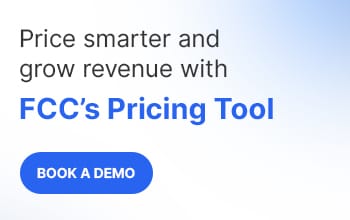Table of Contents
- What is dynamic pricing?
- How does dynamic pricing work?
- What are the benefits of dynamic pricing?
- What are the downsides of dynamic pricing?
- How can pricing solutions help with dynamic pricing implementation?
- Conclusion
What is Dynamic Pricing?
Dynamic pricing, also known as surge pricing or demand pricing, is a strategy that allows businesses to adjust prices for products or services in real time based on current market conditions. This approach provides businesses with the flexibility to respond promptly to changes in consumer preferences and market dynamics.
Retailers employ this pricing method to achieve a range of objectives, including improving profitability, stimulating sales, and managing inventory levels.
How does dynamic pricing work?
Dynamic pricing leverages data-driven algorithms powered by Machine Learning (ML) and AI technologies. These systems analyze vast amounts of historical sales and market data to identify significant patterns and set the best prices for products in real-time. Common factors considered for a successful dynamic pricing strategy implementation include:
- Supply and demand dynamics
- Competitor pricing
- Market trends
- Timing and seasonality

The basic science of dynamic pricing strategies can vary significantly. Some are driven by black-box systems like neural networks, while others utilize different ML systems or statistical techniques. Regardless of the method, dynamic pricing aims to enable rapid price adjustments in response to a wide range of consumer, market, and competitive factors.
What are the benefits of dynamic pricing?
Dynamic pricing can help boost overall profitability for online retailers facing increasing competition. Let’s understand the standout benefits of dynamic pricing:
- Enhanced Pricing Control: Dynamic pricing provides real-time price trends across thousands of products. It enables retailers to set competitive prices, respond to market changes quickly, and maximize revenue effectively.
- Brand Value Protection: This method allows flexibility in pricing without compromising brand value. Retailers can set a price floor that reflects their brand value while remaining profitable and competitive.
- Long-term Cost Efficiency: Dynamic pricing, driven by real-time supply and demand changes, reduces overhead costs by automating price adjustments. This helps enhance profitability and save time and labor on manual calculations.
- Effective Management with Software: E-commerce platforms and dynamic pricing solutions automate the complex process of monitoring product trends, analyzing competitor pricing, and setting optimal product prices.
- Control Despite Potential Errors: While dynamic pricing algorithms may have potential errors, retailers retain control over final pricing decisions, allowing them to review and adjust variable prices to ensure accuracy.
What are the downsides of dynamic pricing?
Let’s analyze some of the challenges posed by dynamic pricing for retailers:
- Customer Backlash and Distrust: Dynamic pricing can lead to customer backlash if not managed properly. For instance, during the COVID-19 pandemic, retailers that raised prices on cleaning products were seen as taking advantage of the situation, leading to a loss of customer trust and loyalty.
- Impact of Poor Data Sources: Dynamic pricing relies on accurate real-time data. Inaccurate data can lead to a ‘garbage in, garbage out’ situation, negatively affecting profitability and sales volume. Ensure data is clean, current, and accurate.
- Altered Customer Behavior: Customers may change their purchasing behavior once they realize fluctuations in peak pricing. They might delay purchases during peak seasons, impacting profitability.
- Reduced Customer Loyalty: Fluctuating prices can confuse the customer base and make them feel taken advantage of, leading them to opt for similar products with fixed pricing. Ensure an excellent customer experience to minimize this risks to brand loyalty.
How can pricing solutions help with dynamic pricing implementation?
Pricing solutions, such as Flipkart Commerce Cloud (FCC), offer several advantages for implementing dynamic pricing strategies effectively:
- Real-time Data Analysis: The software leverages ML models to analyze vast amounts of historical sales data and real-time market data. This helps online stores understand the price elasticity of demand and predict customer responses to pricing changes.
- Competitor Price Monitoring: The software tracks and compares competitor price changes in real-time. This enables retailers to stay competitive by adjusting their prices based on current market conditions.
- Customizable Pricing Rules: Pricing solutions provides a highly customizable rule engine that allows businesses to set specific pricing rules, goals, and guidelines. This ensures that the pricing strategy aligns with the business objectives.
- Automated Price Adjustments: pricing solutions like FCC automates the process of monitoring product trends and setting optimal prices. This reduces the need for manual calculations and administrative tasks, saving time and labor.
- Advanced Outcome Simulation: Several pricing solutions include an outcome simulator that helps businesses plan for various scenarios and application use cases. This ensures that the pricing strategy is robust and adaptable to different market conditions.
Conclusion
Dynamic pricing is a powerful strategy that allows businesses to adjust prices in real-time based on market conditions, enhancing profitability and competitiveness.
It is often regarded as the best pricing strategy as it offers benefits such as enhanced pricing control, brand value protection, cost efficiency, and effective management, but it also has downsides like potential customer backlash and altered behavior. However, dynamic pricing can significantly boost revenue and profitability when implemented effectively.
FAQ
Dynamic pricing is a strategy where businesses adjust prices in real time based on market conditions. For example, Uber uses dynamic pricing to adjust ride fares based on various factors like time, distance, traffic, and rider-to-driver demand.
This approach helps Uber manage supply and demand, ensuring that drivers are incentivized to work during periods of high demand and that riders can find available rides even during peak times.
Dynamic pricing is generally legal in most countries, including the United States, as long as it does not involve price discrimination based on impermissible factors like race, gender, religion, or nationality. It is also legal if it does not violate antitrust laws.
Many industries, including the airline industry, use dynamic pricing to adjust prices for airline tickets based on real-time market conditions. However, businesses must ensure that their dynamic pricing practices are transparent and fair to avoid legal issues.
Dynamic pricing can be both good and bad. It allows businesses to maximize profits and efficiency by adjusting prices based on market demand, often resulting in lower prices during off-peak hours.
However, this pricing model can also lead to excessive overpricing and make prices seem unpredictable and unfair to consumers in the long term. Proper implementation and transparency are crucial to mitigate potential downsides and maintain customer trust.
Variable pricing involves setting different prices for products or services based on predetermined factors, such as customer segments or time periods. These prices are fixed once set and do not change in real-time.
Dynamic pricing, on the other hand, involves changing prices in real-time as per the present market conditions, such as demand, competitor pricing, and other external factors. This approach allows for frequent and responsive price changes. We have a detailed blog on variable pricing vs dynamic pricing if you want to know more.
Dynamic pricing keeps you ahead of the competition. With a price optimization platform like FCC Dynamic Pricing Engine, you can track competitors in real-time, evaluate trends, and make informed pricing decisions.
This pricing approach also provides greater control over your prices. Instead of waiting to see if your products and services are priced effectively, you can adjust prices within minutes for near-instant results. This approach saves money by using data to make quick, intuitive price changes.
Several dynamic pricing software solutions, such as FCC Pricing Manager, can help you manage this. First, determine your business goals, such as achieving specific sales volumes, maximizing profits, or improving cash flow. Based on these goals, set pricing rules to guide the software’s behavior. For instance, if a product has low demand, you can set its price to drop slightly below competitors’ prices but not below a certain floor.

